2024 Workplace Wellness Research
The Mind the Workplace 2024 findings show that workplace cultures built on trust and support improve employees’ experiences of belonging, psychological safety, and empowerment at work.
The Mind the Workplace 2024 findings show that workplace cultures built on trust and support improve employees’ experiences of belonging, psychological safety, and empowerment at work.

Since 2015, Mental Health America (MHA) has analyzed nearly 75,000 work health surveys and published seven research reports. What we have learned from employees’ direct experiences in the workplace informs our best practices, which guide hundreds of employers in their workplace wellness efforts. Nearly a decade of research has shown that a workplace culture built on trust and support remains one of the top contributors to employee mental health and well-being.
The Mind the Workplace 2024 Report: Healthy Workplaces Lead with Trust and Support explores how business leaders can integrate mental health into their workplace’s infrastructure and culture, from building trust through transparent communication to cultivating supportive people managers. When employers invest in structural, high-impact practices, employees report more positive experiences of belonging, psychological safety, and empowerment in their workplace, ultimately improving their mental health and well-being.
MHA’s 2024 Work Health Survey, available on the MHA Screening Program website from April 15 to July 9, 2024, collected responses from 3,915 employees across 21 industries in the U.S. who shared their experiences of trust, appreciation, psychological safety, and support at work and its impact on their well-being. MHA also collected optional demographic data to understand how a multi-generational workforce and different work environments impact employees’ well-being and support needs.
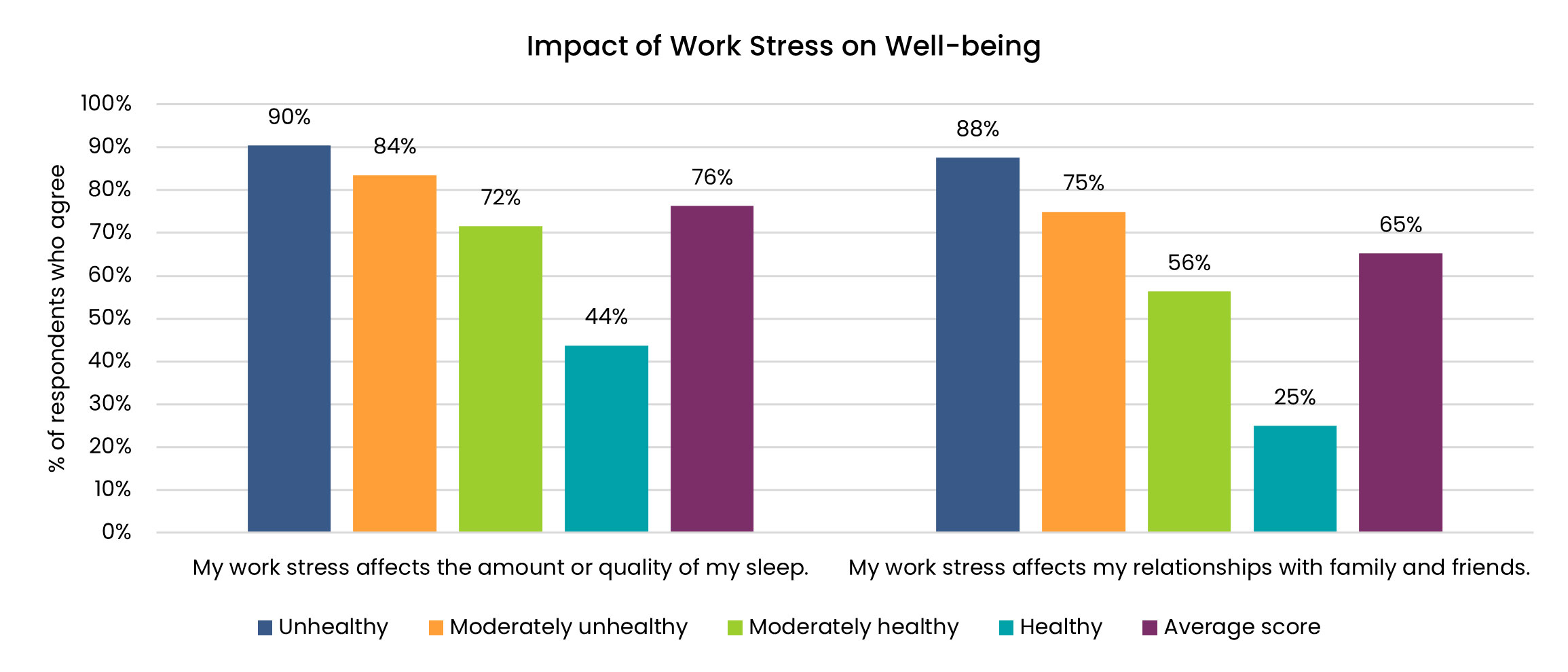
This chart depicts the percentage of respondents who agreed with each statement according to their overall work health scores, indicating which experiences are more prevalent in healthy and unhealthy workplaces.
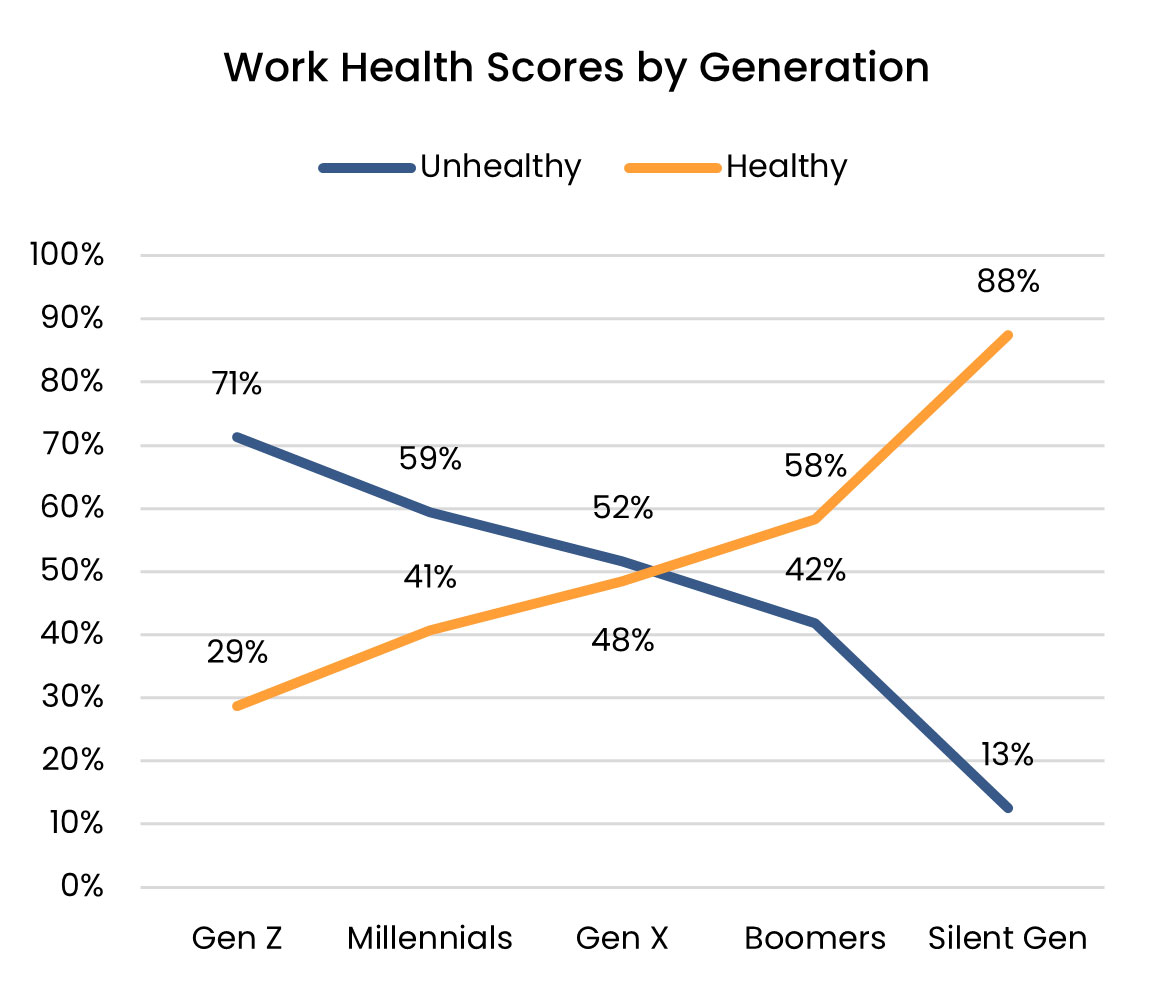
This chart depicts the percentage of respondents with healthy and unhealthy work health scores by generation.
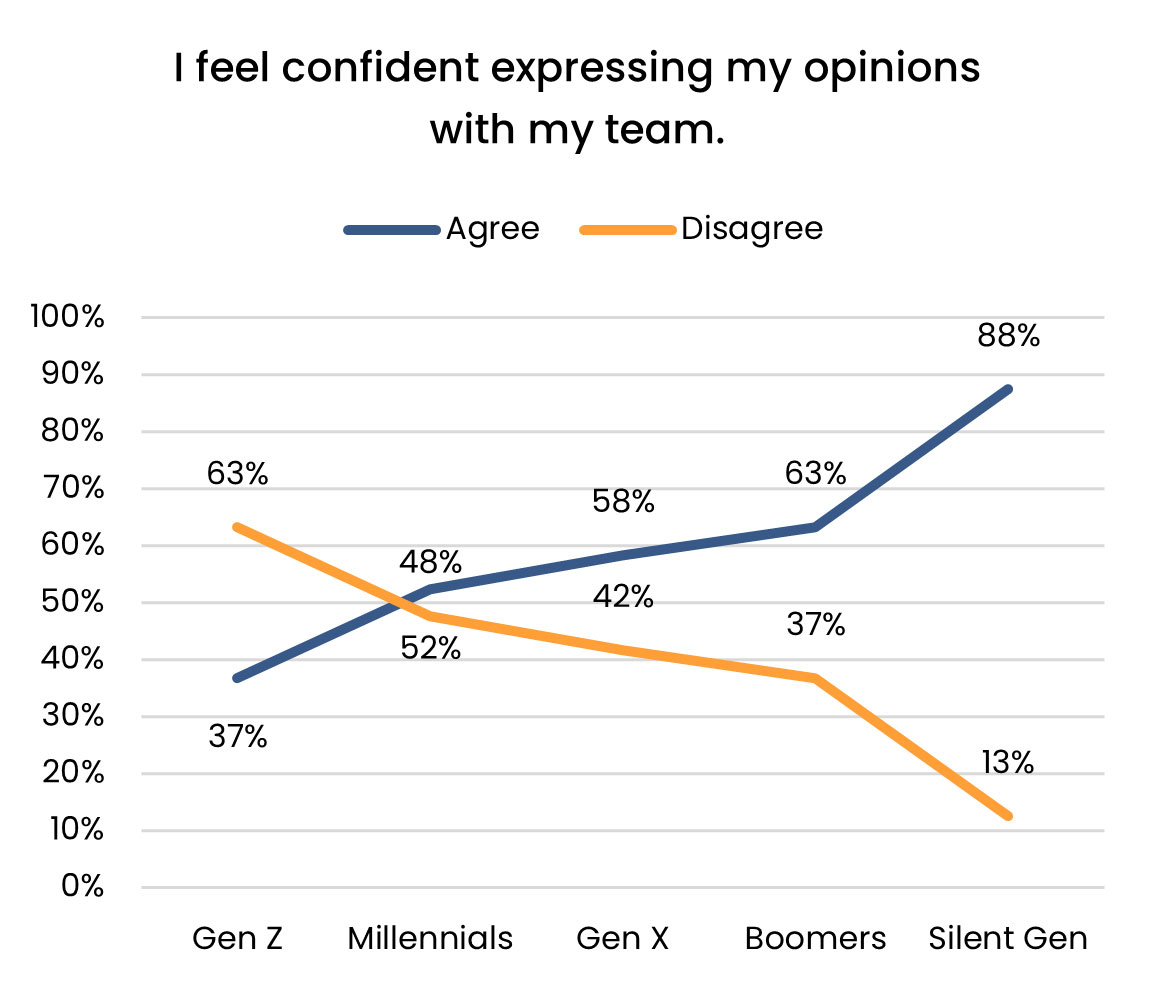
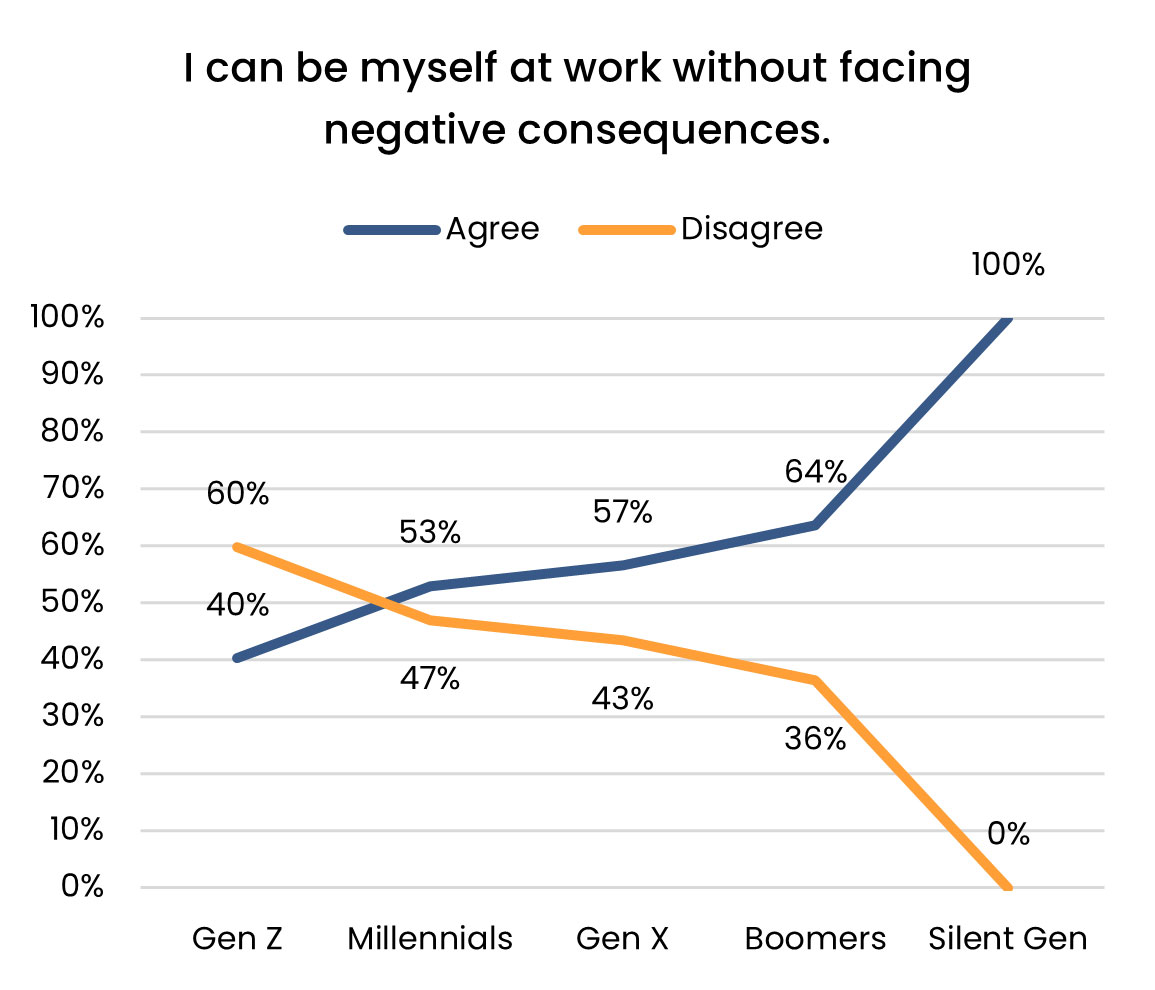
These charts depict the percentage of respondents who agreed and disagreed with each statement by generation.
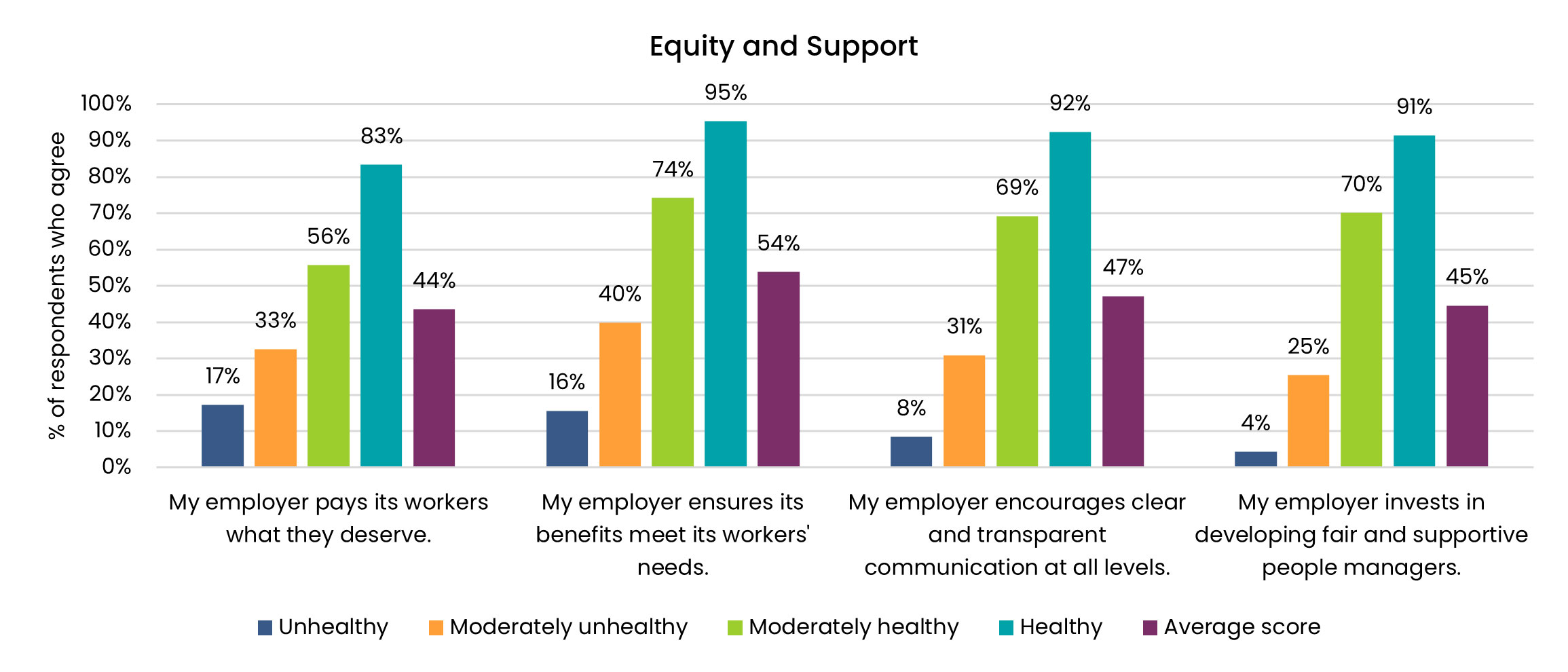
This chart depicts the percentage of respondents who agreed with each statement according to their overall work health scores.

This chart depicts the percentage of respondents who reported which benefits their employer offers in the top 25% of healthy workplaces and bottom 25% of unhealthy workplaces.
The content of this webpage is the property of Mental Health America. MHA grants a limited license to use the webpage, or portions thereof, only if, whenever the webpage is used in written or electronic form, it is clearly stated that the website was created by and is the property of Mental Health America and a link is provided to www.mhanational.org. Under no circumstances may the website be used for any commercial purpose without the express written permission of Mental Health America. For permission to use the content of this webpage, please contact workplace@mhanational.org.
The Work Health Survey included the following statements:
The survey collected optional demographic and work environment information, including gender and racial/ethnic identity, age range, employment status, position, function, work location, organizational size, and industry. The following age ranges define the generations referenced throughout the report: Generation Z (ages 15 to 22), Millennials (ages 23 to 38), Generation X (ages 39 to 54), Baby Boomers (ages 55 to 73), and the Silent Generation (ages 74 and older). Work locations include employees who work in an office or set work location, have remote, hybrid, or flexible options to work from home or another location, or work in various locations. All optional demographic questions are listed in Appendix B.